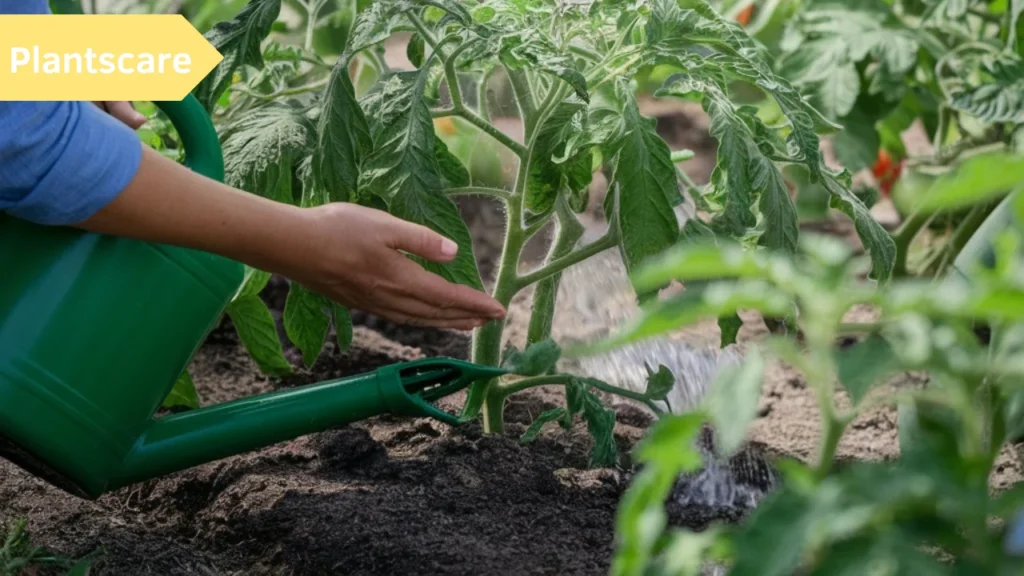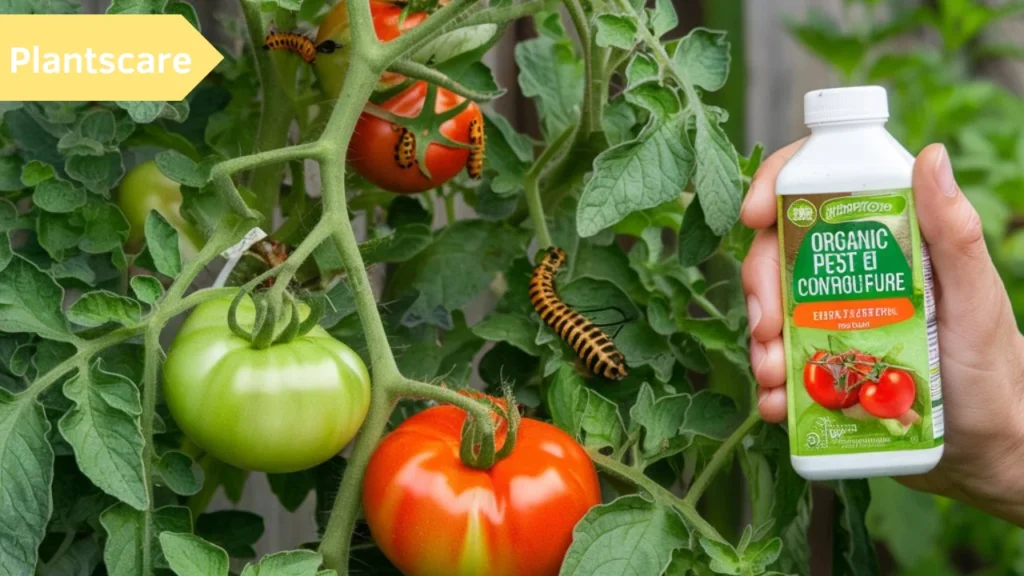Tomatoes are one of the most popular plants to grow in a home garden, “How to Take Care of Tomato Plants?” and for good reason! Whether you’re growing them in a backyard or a container on your patio, tomatoes are relatively easy to manage with the right care. But like any plant, they do need proper attention to thrive and produce a bountiful harvest. Let’s break down how to keep your tomato plants healthy from planting to harvest.
Choosing the Right Tomato Variety
Choosing the right variety is your first step. There are hundreds of tomato varieties, ranging from small cherry tomatoes to large beefsteak varieties. When selecting, consider factors like your climate, available space, and how you plan to use the tomatoes. For example:
Tomatoes Cherry
Are great for small spaces and grow quickly.
Beefsteak Tomatoes
Take longer to mature but produce large, meaty fruits.
Heirloom Varieties
Offer unique flavors but may require more care to prevent disease.
Planting Tomatoes: Step-by-Step Guide
When to Plant Tomatoes
Tomatoes thrive in warm weather, so the best time to plant them is after the last frost in your area. They need soil temperatures of at least 60°F to germinate and grow properly.This is usually in late April in most areas.
Preparing the Soil for Tomatoes
Tomato plants prefer loose, well-drained soil rich in organic matter. Add well-rotted manure or compost to your soil before planting. A pH between 6.2 and 6.8 is ideal, so test your soil and adjust if necessary.
Spacing and Depth for Tomato Plants
Space your tomato plants about 18 to 36 inches apart, depending on the variety. Allow two thirds of the plant’s stem to be buried when you dig a hole this deep. manure that has decomposed well. Tomatoes develop roots along their stems, so planting them deeply encourages a stronger root system.
Watering Tomato Plants
How Often to Water Tomatoes
Tomatoes need consistent watering to thrive, but overwatering can lead to root rot. Aim to water your plants deeply 1-2 times a week, depending on the weather. During hotter periods, they may need more frequent watering.
Signs of Under or Overwatering
Underwatered tomato plants will show signs of wilting, while overwatered plants may develop yellowing leaves and root rot. Check the soil moisture regularly to find a balance.

Fertilizing Your Tomato Plants
Best Fertilizers for Tomatoes
Tomato plants are heavy feeders and benefit from a fertilizer that’s high in phosphorus and potassium, like a 5-10-10 blend. Organic options such as compost tea or fish emulsion work well too.
How to Apply Fertilizer
Start fertilizing your tomato plants about two weeks after planting. Apply fertilizer around the base of the plant, being careful not to let it touch the leaves. During the growing season, fertilize every four to six weeks.
Pruning Tomato Plants for Optimal Growth
Why Pruning is Important
Pruning helps to promote air circulation and sunlight exposure, both of which reduce the risk of disease. It also encourages the plant to focus its energy on producing fruit rather than excessive foliage.
How to Prune Tomato Plants Properly
Remove the lower leaves that touch the ground and any “suckers” (small shoots growing in the joint of two branches). Cut sparingly so as not to overtax the plant.
Staking and Supporting Tomato Plants
Types of Tomato Supports
Supporting your plants is essential to prevent sprawling and to keep the fruit off the ground. Common support systems include stakes, cages, and trellises.
How to Tie Tomato Plants to Stakes or Cages
Gently tie your plants to the support with soft twine or fabric, making sure not to damage the stems. As the plant grows, continue to tie it at intervals.
Common Pests and Diseases in Tomato Plants
Identifying Tomato Plant Pests
Aphids, hornworms, and whiteflies are common pests that can affect tomato plants. Inspect your plants regularly for signs of infestation, such as holes in the leaves or tiny insects.
Preventing and Treating Diseases
Tomato plants are susceptible to blight, leaf spots, and mildew. Prevent disease by spacing your plants properly and watering at the base to keep the leaves dry. If disease strikes, remove affected leaves and consider using an organic fungicide.
Managing Tomato Plant Growth
Dealing with Leggy Plants
Leggy tomato plants are usually a sign of insufficient light. If your plants are stretching, consider moving them to a sunnier spot or adding a grow light if you’re indoors.
Controlling Tomato Plant Height
Pruning and pinching back growth can help control the height of indeterminate tomato varieties, which can grow quite tall if left unchecked.
Harvesting Your Tomatoes
When and How to Harvest
Tomatoes are ready to harvest when they are fully colored and slightly firm to the touch. Use scissors or pruning shears to snip the fruit from the vine, being careful not to damage the plant.
Best Practices for Picking Tomatoes
Pick tomatoes as soon as they ripen to encourage further fruit production. If a frost is coming, pick all tomatoes, even if they’re green, and allow them to ripen indoors.

Dealing with Common Tomato Plant Problems
Blossom End Rot
Blossom end rot appears as a dark, sunken spot at the bottom of the fruit. It’s caused by a calcium deficiency, often related to inconsistent watering. Mulch around your plants to retain moisture and water regularly.
Cracking or Splitting Fruit
Cracking happens when tomatoes experience a sudden intake of water after a dry spell. Water regularly and evenly to prevent this issue.
Growing Tomatoes in Containers
Choosing the Right Container
Tomato plants grown in containers need at least a 5-gallon pot to thrive. Make sure the container has good drainage to prevent waterlogged roots.
Tips for Container Tomato Care
Water container plants more frequently, as they tend to dry out faster than those in the ground. Also, fertilize regularly, as nutrients can leach out of the soil more quickly in containers.
Companion Plants for Tomatoes
Best Companion Plants
Companion planting can improve tomato health and yield. Basil, marigolds, and garlic are great companions, as they can repel pests and improve the flavor of your tomatoes.
Plants to Avoid Near Tomatoes
Avoid planting tomatoes near potatoes, as they share similar pests and diseases. Also, keep fennel and corn at a distance.
Winter Care for Tomato Plants
Extending the Growing Season
You can extend your tomato growing season by using row covers, cold frames, or moving container-grown plants indoors during cooler months.
How to Overwinter Tomato Plants
In warmer climates, you can overwinter tomato plants by bringing them indoors or covering them with frost blankets. Alternatively, consider growing a smaller, indoor variety during the colder months.
Conclusion
Taking care of tomato plants may seem overwhelming at first, but with a little attention and the right techniques, you’ll be rewarded with delicious, homegrown tomatoes all season long. Just remember to provide plenty of light, consistent watering, and some TLC!
FAQs:
How much sun do tomato plants need?
Tomato plants need at least 6-8 hours of direct sunlight daily to thrive.
Can I grow tomatoes indoors?
Yes, as long as you provide enough light, such as from grow lights, you can grow tomatoes indoors.
Why are my tomato plants not producing fruit?
This could be due to extreme temperatures, lack of pollination, or improper watering.
What is the best time to plant tomatoes?
Plant tomatoes in late spring, after the last frost, when the soil has warmed to at least 60°F.
How often should I fertilize my tomato plants?
Fertilize you tomato plants every 4-6 weeks during the growing season for best results.
Pingback: Tomato pH Requirements
Pingback: Soil for Tomato Plants
Pingback: Plant with Tomatoes in a Container
Pingback: How Often Do You Water Tomato Plants?
Pingback: Baking soda for tomato plants
Pingback: What is good for tomatoes?
Pingback: Signs of a dying tomato plant
Pingback: How to make tomatoes grow faster?
Pingback: Easiest house plants to care for